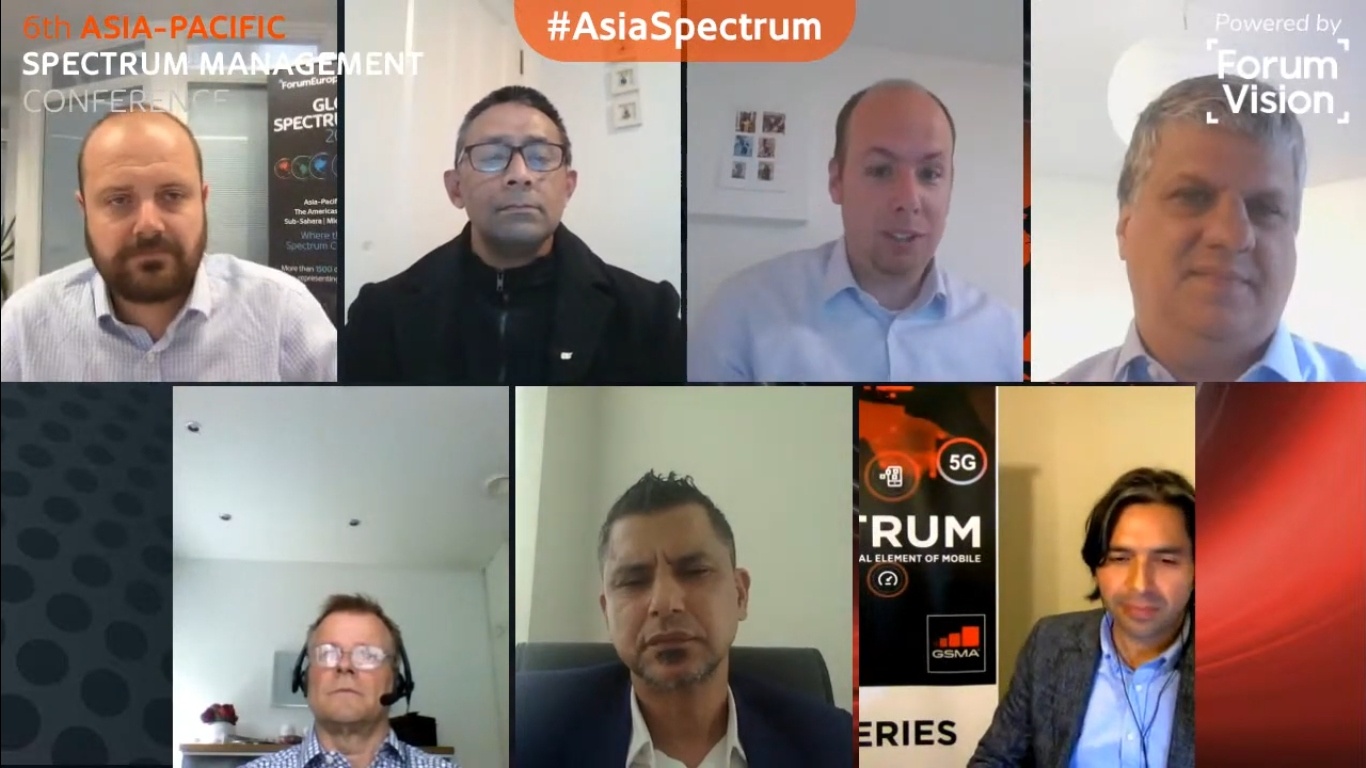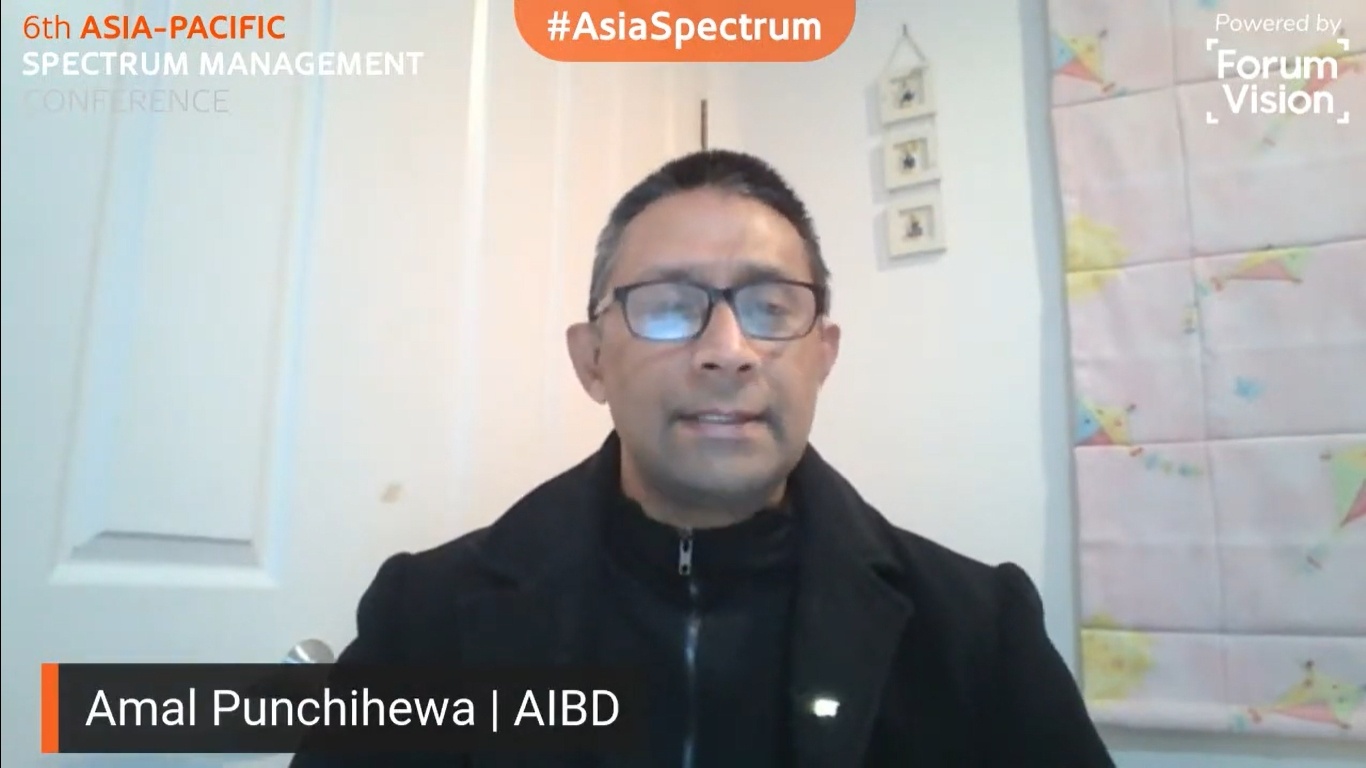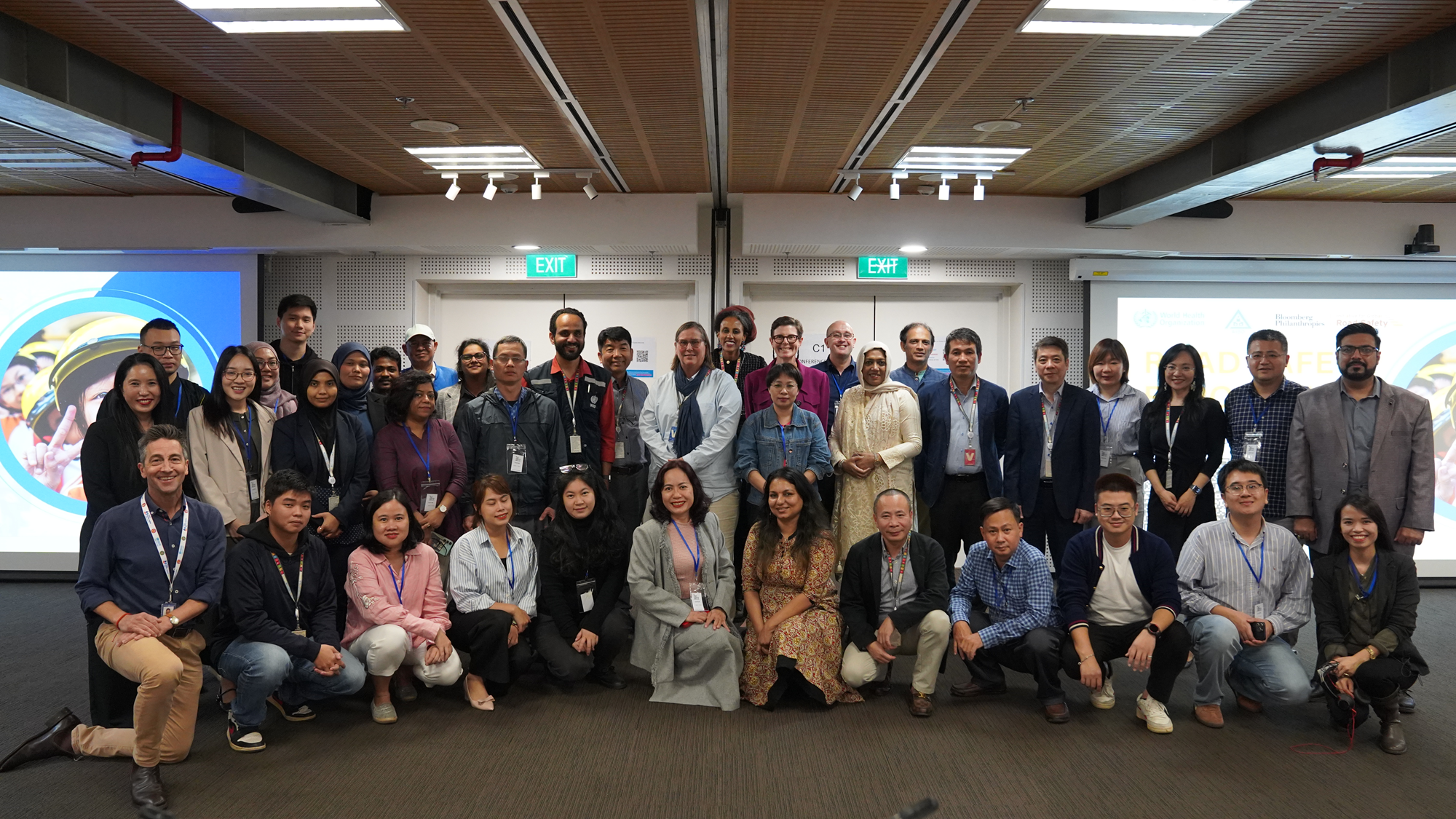
Spectrum for Broadcasters to offer Content OTA?
By Dr Amal Punchihewa
The 6th Asia Pacific Spectrum Management Conference was held virtually from 3 – 6 August 2020. AIBD was invited to provide the broadcasters’ perspective to the conference. As a consultant and advisor of Broadcast and ICT, the author had the honour of representing AIBD at the conference. One of the main discussions of the conference was the spectrum requirements of new mobile services of IMT2020. The emerging new mobile services of IMT2020 are based on a new over-the-air (OTA) interface that is commonly known as 5G. IMT2020 aims at three areas of services, among them, enhanced mobile broadband (eMBB) can be used for broadcast delivery. 5G claims it could offer high bit rate and low latency that is required by the broadcast industry. The mobile industry has been campaigning for new spectrum allocations to deliver new services using three frequency bands, namely, low, mid and high-frequency band.

Similar to the mobile industry is working on the introduction of its next-generation 5G technology, the broadcast industry also has been planning its next-generation technologies such as DVB-T2 and ATSC 3.0. Current broadcast technologies and services are not at the end of their products not limited to a small part of the population. The current systems are already deployed, accessible and affordable. Broadcasters have been using networks deployed by network service providers to deliver quality assured signal to everybody. Broadcast services are universally accessible with reach close to 100%. People do have devices to access the content. Whereas mobile operators who wish to offer 5G mobile services have not even reached 3G or 4G for 100% population and geography. There are no devices and any device for 5G reception are in the highest price bracket.
The value of broadcasting has been shown very clearly in recent times during the pandemic COVID-19. As two examples: Firstly, the public and all other broadcasters started, continue to offer the news and the education on health aspect while entertaining and educating the young generation those who confined to their home too. Secondly, a research that was presented in July 2020 in Australia by a professional organisation of commercial broadcasters revealed 97% of Australian households have an antenna to access TV, 87% value the ability to access commercial TV without any data or internet access, and 90% of Australians agree it is important that commercial TV provides the same content to everyone. Broadcasting is an important service which is not going to go away. Australia is a country that has already embarked on the 5G and they use high-frequency bands that could carry very high bit rates up to 1Gbps as 5G claims.
National, regional and global management of Frequency Spectrum:
The spectrum is a very limited economic natural resource. It is hard to extend the spectrum. However, when you are extending the usable spectrum it is expensive and difficult to design and operate. It is always a requirement to optimally use that limited natural resource. The focus of this paper is on frequency band below 1 GHz. When it is examined from the broadcasting perspective, UHF band IV and V, i.e. 470 MHz to 960 MHz, have been in use for broadcasting for many decades.
International Telecommunication Union (ITU) is a United Nation’s agency that oversees global communications. Radio regulations and recommendations are agreed at member meetings mostly through consensus. There are three regions for frequency management. APAC region is known as region III for ITU world radio conference (WRC) and frequency management purposes.
Globally, the ITU has 196 member countries, only 73 members have completed analogue switch-off (ASO) and 20 countries have not updated information and the balance 103 are still working on transition either simulcasting or analogue transmission only. Each country is unique by its social, economic, technological, cultural, political and other aspects. They are quite heterogeneous. But at the same time, APAC has the most technologically (ICT, broadcasting and media) advanced countries such as Japan, South Korea and China. So, they can progress rapidly, and their rate of adoption and deployment cannot be replicated or generalised to other countries. The Pacific Island countries scattered over larger geography in the isolated areas on the sea. The coverage is very difficult in such scenarios.
In the APAC region, 38 spectrum management member countries belong to an organisation called Asia-Pacific Tele-community (APT). Among those 38 APT member countries, only seven of them have already migrated to digital TV by switching off analogue television broadcasting completely (aka ASO). There are 31 more countries to switch off analogue TV. A small number of TV broadcasters are having simulcast and others are on analogue television broadcasting that reaches closely 100% by population and geography. Hence, every citizen in the country has access to information, entertainment and education without a gatekeeper. In many of those countries the majority of people not yet have access to 3G or 4G mobile services and low affordability. Though responsibility to assign frequencies for IMT2020 and broadcasting is now with respective spectrum administrators in respective countries in APAC after WRC recent meetings, no sensible national authority could assign frequencies in use.
Transition to Next-Generation Technologies and Services:
Broadcasters in each country need to make a transition from current technologies such as analogue TV and current digital terrestrial television DTT 1.0 (e.g. DVB-T & ATSC 1.0) to next-generation technologies (e.g. DVT-2 & ATSC 3.0) and services such as HD, UHD, NGA, WCG and HDR so on.
In APAC, Australia and New Zealand as early adopters of DTT (Digital Terrestrial Television) need to transition to the next generation of broadcasting technology and services. Australia and New Zealand introduced DTT using DVB-T at an early stage of digitalisation of terrestrial TV. Recently both Australia and New Zealand carried test using the DVB T2 for their Next-Generation television broadcasting to broadcast Ultra-high Definition television (UHDTV) also loosely known as 4K as both Australia and New Zealand deeply value broadcasting despite declining OTA only viewing. However, people access that content as catch up with Freeviewplus or access on-demand content that is offered by broadcasters via hybrid TV – HbbTV branded as Freeviewplus.
Some countries have a large collection of analogue television channels, which are scattered over the majority of the complete UHF bands, which makes it difficult for them to vacate some of the frequency spectrum. For countries, those who have not completed ASO need spectrum to simulcast during DTT transition. Even countries that have adopted digital terrestrial television broadcasting (DTT 1.0), they need to make a transition to the next-generation TV. South Korea is one of the countries who has already started the transition to next-generation DTT 2.0 with ATSC 3.0. South Korea while rolling out DTT 2.0, they also made available some of the frequency spectrum for the 5G as well. There are difficulties and inability in harmonising across the wider region to identify more spectrum.
Can OTT substitute Over-the-air broadcasting?
In the past, there has been a misconception that video access over unmanaged IP networks commonly known as OTT could deliver television broadcasting. In the APAC region, only 48.4% of the population does have some sort of a broadband connection and those are not capable of receiving high definition (HDTV) and very near future ultra-high definition (UHDTV). We need broadcasting which can carry that high capacity signals affordably.
It is required to highlight that there is a lot of misunderstanding among people about linear and nonlinear content or what a broadcaster does. Arguments were presented that everybody is a broadcaster with a mobile phone with user-generated content. The user-generated content is a very little contribution, but television broadcast is a business operation producing and delivering high- quality trusted content. Currently, the broadcaster could cater to the audience via both over the air (OTA) as well as online delivery combined with interactivity through hybrid TV engines such as HbbTV, which provide the interactivity. Therefore, the broadcast attracts more engagement and eyeballs.
Today broadcasters are offering their content not only through over-the-air (OTA) but also online. One of the competitive advantages that broadcasters have is the ability to offer a mixture of live, pre-recorded and news programmes both over-the-air and over-the-broadband. We can observe some of the global online service providers are planning to offer live programmes. Broadcasters not only offer live and other programmes but also catch up and on-demand content seamlessly combined with broadcast content using hybrid environments facilitated by HbbTV. It is also important to note that there are no substitutes for broadcasting. It is another misconception that the Internet delivery (also known as over the top video delivery) or the online is a substitute for current broadcast services over the air. Large OTT players have failed to convince that as growth for online tends to flatten and in some cases, they are dropping. OTT or online delivery is a complementary delivery mechanism to over-the-air that offer the audience to access the content of their choice, at a location and a time they want and can. Today most of the broadcasters offer their content with interactivity using hybrid environments that integrate OTA and OTT seamlessly. They offer both catches up as well as additional and premium content. The UHF band four and five have been in use for broadcasting for over many decades, one to perform the delivery of broadcast content and to other users in television programme production, which is generally known as programme-making in a special event (PMSE). Broadcasters have using spectrum as agreed in ITU studies and conferences. Broadcasting Service (BS) is defined under radio regulation RR1.38. It is a transmission of content to the general public in large and not limited to a small part of the population who can afford to pay recurrently and continuously to access information, education and entertainment. There is no barrier to access broadcast content.
5G and Broadcasting
The broadcast industry recognises some of the services that 5G could offer by the mobile industry and they need to coexist with broadcast service, having minimal coordination and interference mitigation activities. Harmonised operations will enable a cost-effective solution. There are developments around 5G could theoretically enhance broadcast television services. However, there are no costings for the operations yet and there are no devices available yet. Broadcasting is the most spectrum efficient and cost-effective while maintaining universal access at an affordable cost to viewers. Broadcast maintains the highest quality of service in the delivery network provided by the network operator and also the highest level of quality of experience for the audience.
Authorities and mobile operators need to be practical and realistic. During seminars and conferences, it is questioned that highly optimistic predictions and unrealistic demand projections. We could recall even during the preparation time for WRC-15, the prediction models of the mobile services were challenged. The models were revised to represent close to reality.
Conclusions:
Both mobile services (MS) and broadcast services (BS) are closely linked to technology. DVB-T has no capacity to carry UHD services. Current SD and HD broadcasting services on DVB-T for early adopters need to transition from HD to UHD services using NextGen broadcast Technologies such as DVB-T2 and ATSC 3.0. The state-of-the-art broadcast technologies have excellent key performance indicators (KPIs – QoE. QoS, cost, spectrum efficiency, architecture, devices, networks) to serve HD, UHD, interactive type of services using currently available networks and devices that are affordable. Both 4G and 5G services cannot carry broadcasting effectively, efficiently more importantly affordably. Even during the panel session of APSMC2020, the moderator of the session mentioned that there is a valid and strong case for broadcasting based on facts for broadcasting. It was agreed that, as presented here, the discussion highlighted the need for continuing to broadcast for foreseeable future. Hence it is important to preserve adequate bandwidth in sub 1GHz to carry on broadcasting.







